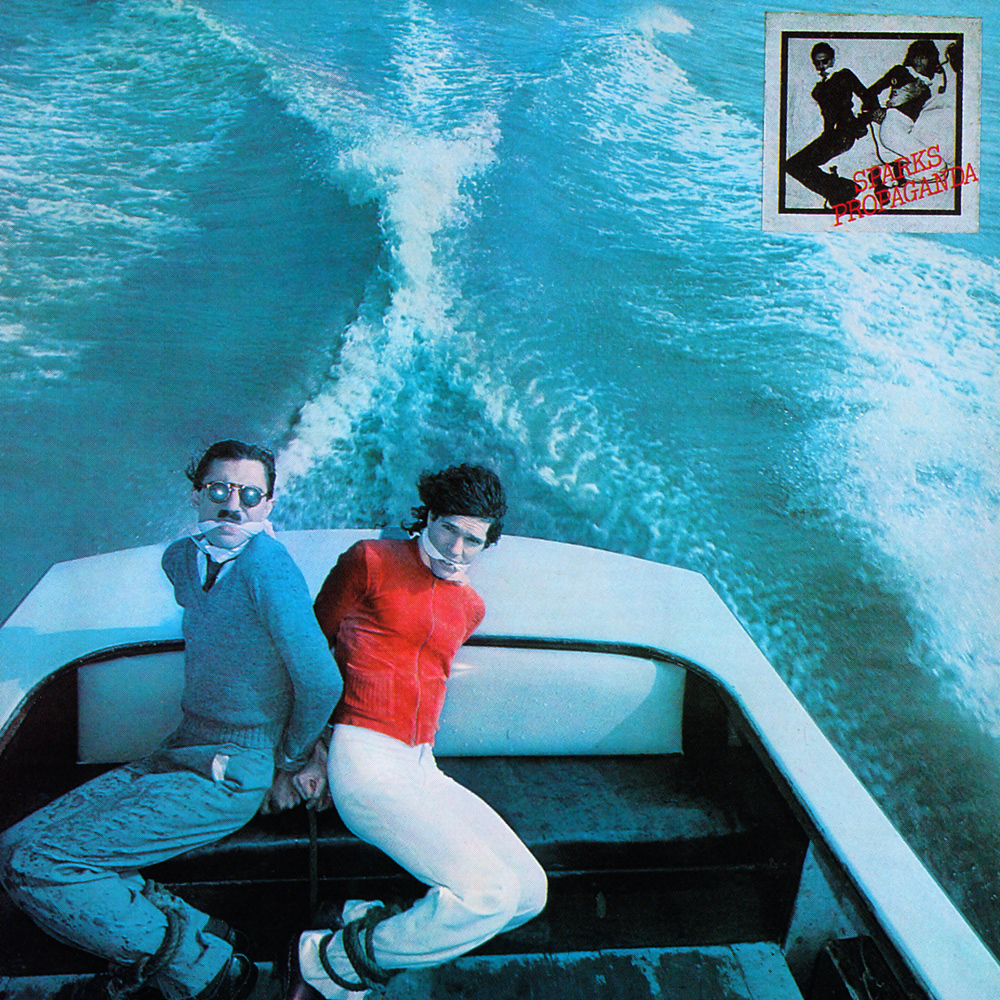Sparks, one of the most reclusive bands in the world, was formed by brothers Russell and Ron Mael in early 70s Los Angeles. Known for their falsetto vocals, sharp outfits, Hitler-style moustaches, and theatrical stage antics, the brothers and their band stood out — Sparks was unlike anything else happening at the time. In fact, the band’s most famous track — the operatic “This Town Ain’t Big Enough For Both Of Us” — was declared one of the best pop songs ever written by music critics when it came out in 1974. Sparks’ music is interesting, complicated, and funny; it traverses genres like new wave, synth-pop, cabaret, and disco. Today, forty years on, the band is still writing and releasing courageous albums. While other acts with huge followings like Sonic Youth, The Ramones, and Faith No More have cited Sparks as an influence, the band itself never hit the same heights.
In 2000, Israeli filmmaker and dedicated Sparks fan Pini Schatz set out to make a film about his favorite band. Without the direct cooperation of the Mael brothers, Pini, over the course of almost five years, focused his camera on the band’s fans to help tell the story. The result: Never Turn Your Back on Sparks. Following its screening at the AICE (The Australian Israel Cultural Exchange) Israeli Film Festival in Sydney, i-D Australia caught up with Schatz to find out more.
Fellow Sparks fan and Dead Kennedys front man Jello Biafra opens your film. How did that come about?
At the beginning I sent an open letter out to all the Sparks fans around the world and Jello Biafra responded. He happened to be in Israel to give a talk, just five minutes from my house. Unfortunately, the talk was cancelled but he was happy to appear in the film, which was lucky for me.
In terms of famous Sparks fans, you also speak to Joe Elliott, the lead singer of Def Leppard, who has great insights. The other people who appear in the film are lesser known but no less interesting.
I wanted to show that their fans are all types of people. There’s an artist who has painted portraits of the band for years and years, as well as a sound artist who likes to record the sound of things being laminated. In the film he records the lamination of a Sparks’ recording.
Have Ron and Russell seen your film?
I was in touch with them over the time I was making it and while they didn’t agree to be in the film, I met them after a concert and sent them a rough cut. Initially they had some reservations and unfortunately they didn’t come to any public screenings, but in the end they loved the film.
That must be a relief.
One of the things that made them come round was that after the premiere of the film, my wife died from cancer. She was the initiator of the film and designed all the graphics; when Sparks heard about her, they started answering my emails again.
Wow, we’re so sorry to hear about your wife. That’s great that she saw the film’s release.
Yes, she was able to come to the premieres and those afterwards were in her memory. She designed the credits and was a very well-known designer in Israel.
And how’s the public reaction been to the film so far?
Sparks fans say it shares the Sparks’ sensibility — that it has the same quirky feeling sitting somewhere in the middle of serious and tongue-in-cheek — and people who were already fans have really loved it. Of course, most of the people who’ve seen it have never heard of Sparks and from them, it’s been mostly the same reaction. Regardless of whether they’re young or old, they all say they’re running home to search YouTube for Sparks videos. People just become fans.
Sparks has remained so mysterious, but over its lifespan, its members have worked with some really great people and producers, like Giorgio Moroder and Tony Visconti. Do you think they actively avoided becoming more popular or were simply dedicated to keeping their art pure?
It’s a good question; they are just so quirky, too weird for the mainstream. In terms of their music, they did what they wanted. Just when you thought you understood them as a glam rock band, they’d suddenly change and make disco. In terms of the film, they’re the only band I know of [whose members] have consistently refused to appear in any film about them. Even the Residents, the most mysterious band in the world, agreed to appear in a film someone was making about them. I suppose if Martin Scorsese had approached them, they might have agreed. As it turned out, it was interesting making a film about the band without the band. That’s what it became about.
Is there anyone you would have liked to interview that you didn’t?
Yes, Morrissey. It almost happened. He’s a well-known Sparks fan so I reached him and after a few months, he contacted my producer and said he would do it. We set a date for the interview in Brighton but then I got an email saying he couldn’t make it…and then he changed his email.
What a shame.
Morrissey asked them to play the Meltdown Festival in 2004, which he was curating. He asked them to perform their old hits but they refused because they wanted to play new music. In the end they compromised because it was Morrissey, I guess.
Are you looking forward to hearing their new music?
Yes, it’s due to be released next year. I wanted to make this film because they are not the only band I love from the 70s, but they’re the only ones who, after 45 years, are still making new music. They’re not content just making money off nostalgia.
